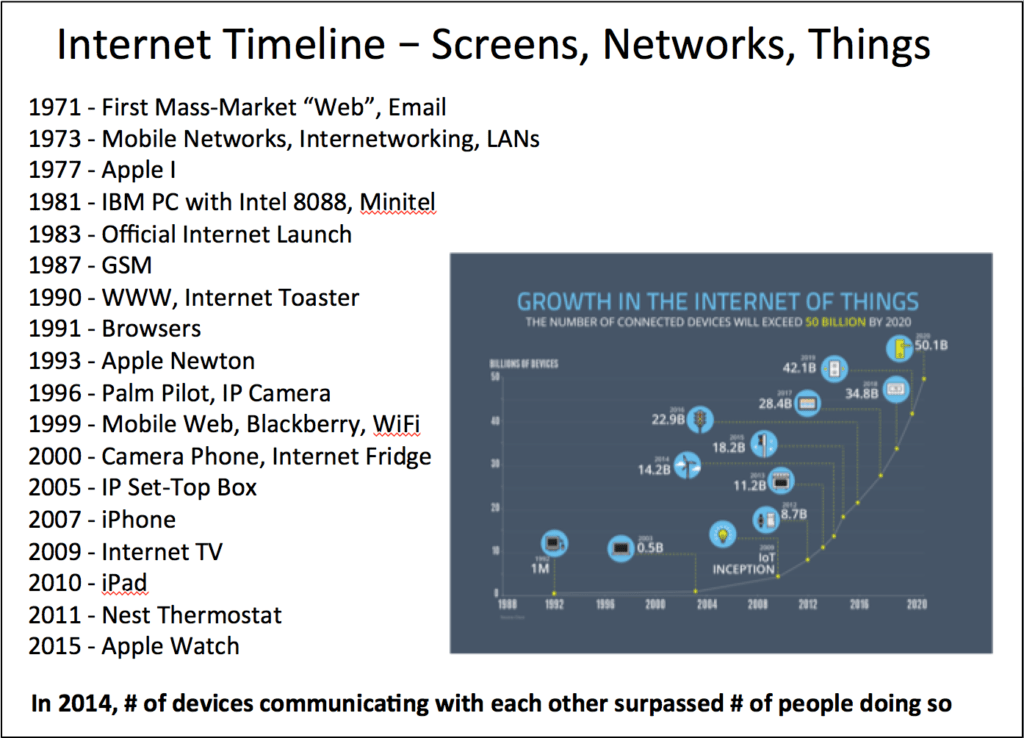internet of things timeline

As we look back at the history of the Internet, we can see the significant progress that was made in a relatively short period. It wasn’t that long ago that the Internet was still in its infancy, with people using dial-up connections to access slow-loading web pages. But with time, the Internet has evolved into something much more advanced and sophisticated, thanks to the efforts of scientists, engineers, and researchers around the world.
The Industrial Internet of Things Timeline

One of the most significant advancements that have taken place in recent years is the advent of the Industrial Internet of Things (IIoT). This technology has enabled us to connect machines, sensors, and other devices to the Internet, allowing us to gather data and analyze it in real-time. The IIoT has transformed the way we do business, allowing us to move beyond traditional manufacturing methods and embrace a more digital, data-driven approach.
The timeline of the IIoT is worth exploring in more detail. From its beginnings in the early 2000s to the present day, the timeline demonstrates how quickly this technology has developed, and how it has impacted various industries worldwide.
Abstract
The Industrial Internet of Things (IIoT) is a technology that involves connecting machines, sensors, and other devices to the Internet. The IIoT has transformed the way we do business, allowing us to move beyond traditional manufacturing methods and embrace a more digital, data-driven approach. This article will explore the timeline of the IIoT, from its early beginnings in the 2000s to the present day, and how it has impacted various industries worldwide.
Introduction
The IIoT is often regarded as one of the most significant technological advancements of our time. It has created a new digital landscape where machines, sensors, and other devices are interconnected, and information is gathered in real-time. This technology has transformed the way we manufacture goods, manage supply chains, and provide services. It has enabled us to optimize efficiency, increase productivity, and reduce costs, all while improving customer satisfaction.
But where did the IIoT begin? Like all technologies, the IIoT has a history, and understanding this history can help us appreciate just how far we’ve come. The timeline of the IIoT is a fascinating one, with many key events shaping its development over the years.
Timeline of the IIoT
2002 – Kevin Ashton, a co-founder of MIT’s Auto-ID Center, coins the term “Internet of Things.” The concept of the IoT involves connecting everyday objects to the Internet, from household appliances to cars, and allowing them to exchange information and data.
2003 – The first company to use RFID (Radio Frequency Identification) technology is Walmart. They used the technology to track inventory, and it quickly became an integral part of their supply chain management.
2008 – The first IoT conference takes place in Zurich, Switzerland. It brings together researchers, scientists, and engineers to discuss the future of the IoT and its potential impact on various industries.
2010 – A consortium of companies, including ARM, IBM, and Cisco, launch the “Internet of Things Forum” to promote and standardize the IoT. The group aims to create a unified platform and architecture for IoT devices and applications.
2012 – General Electric (GE) launches its Industrial Internet initiative, which aims to connect machines, sensors, and other industrial equipment to the Internet. The initiative aims to improve efficiency, reduce downtime and maintenance costs and improve safety in industrial settings.
2015 – The Industrial Internet Consortium (IIC) is formed, consisting of top global companies and academic institutions. The group aims to promote the development of the IIoT and create a forum for collaboration and standards development.
2016 – GE releases its Predix platform, an operating system that allows developers to build IIoT applications. The platform is designed to be scalable, secure, and interoperable with other IIoT devices.
2018 – The IIoT market is expected to reach USD 123.89 billion by 2021, with a Compound Annual Growth Rate (CAGR) of 7.39%. The market is driven by increased automation, improved connectivity, and the growing demand for data analytics and insights.
Impact of the IIoT on Various Industries
The IIoT has impacted various industries worldwide, transforming the way businesses operate and changing the nature of work. Here are a few examples:
Manufacturing
The IIoT has revolutionized the manufacturing industry, allowing factories to be more efficient and productive than ever before. With IIoT devices, factories can collect real-time data on machine performance, detect problems early, and avoid downtime. This has led to reduced costs, improved quality, and increased output.
Oil and Gas
The IIoT has helped oil and gas companies optimize efficiency while ensuring worker safety. With IIoT devices, companies can monitor equipment performance in real-time, detect leaks, and prevent accidents. The IIoT has also enabled companies to automate processes, reducing the risk of human error in dangerous environments.
Transportation
The IIoT has revolutionized the transportation industry, enabling us to track goods and shipments in real-time. With IIoT devices, companies can monitor their fleets, optimize routes, and reduce fuel costs. The IIoT has also improved customer satisfaction by providing real-time updates on delivery times and statuses.
Conclusion
The Industrial Internet of Things has come a long way since its inception. With each passing year, it has continued to grow and evolve, transforming the way we do business and live our lives. While there are still many challenges to overcome, such as security and interoperability, the promise of the IIoT is immense. As we move forward into this new digital age, it’s exciting to think about what the future holds, and how the IIoT will continue to connect us in innovative, creative ways.

Source image : www.rattletech.com

Source image : www.pinterest.com

Source image : no.pinterest.com





